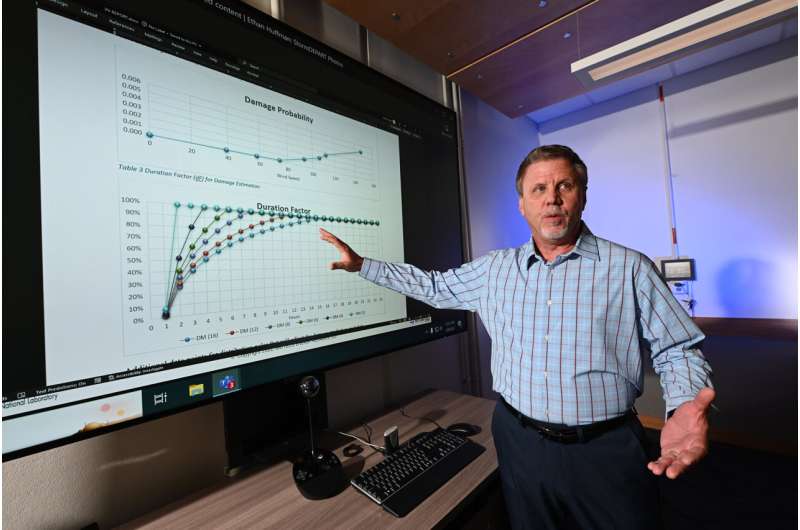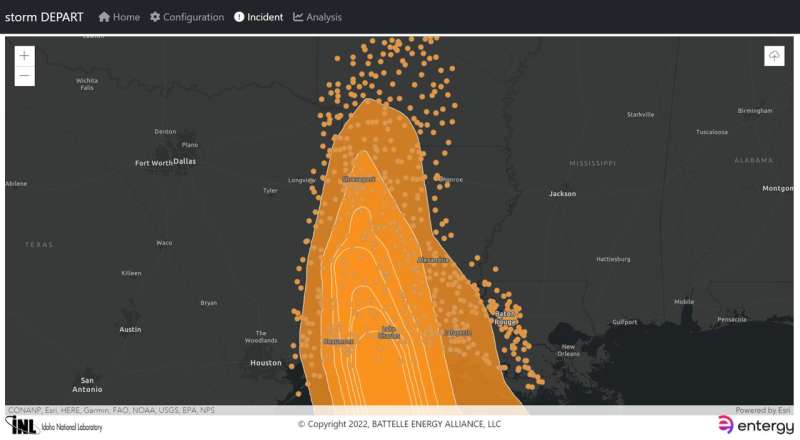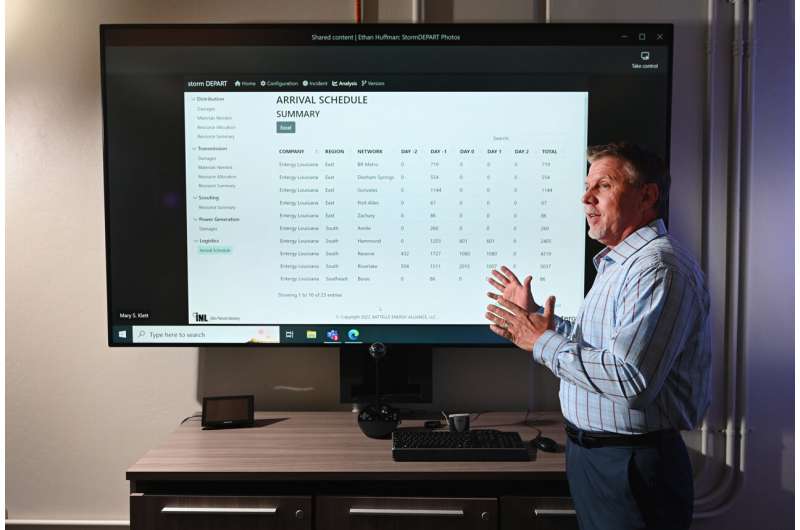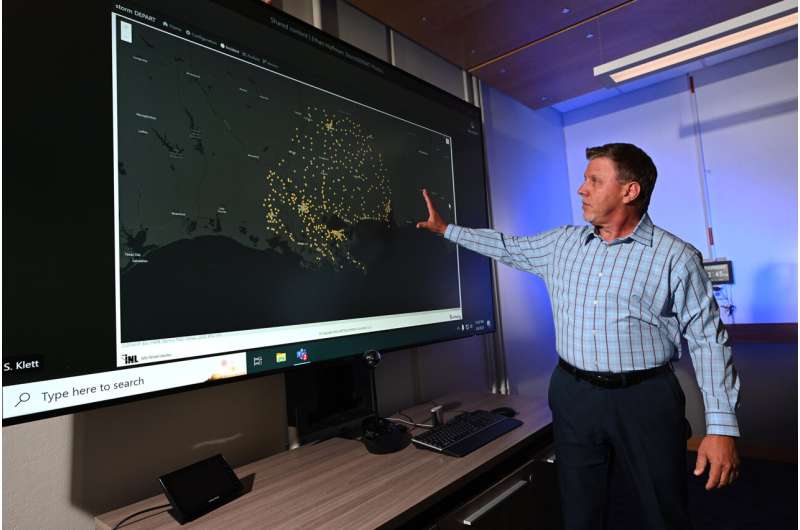This article has been reviewed according to Science X's editorial process and policies. Editors have highlighted the following attributes while ensuring the content's credibility:
fact-checked
trusted source
proofread
Researchers develop tool to help restore electricity after natural disasters

In August 2005, Hurricane Katrina made landfall on the U.S. Gulf Coast with wind speeds reaching 140 mph, eventually causing more than 1,800 deaths and $1.8 billion in damage.
The hurricane also left roughly 3 million people in Louisiana, Mississippi, Alabama, Florida and Georgia without electricity for up to three weeks.
In February 2021, ice storms devastated communities throughout Texas, costing roughly $195 billion and leaving roughly 4.5 million homes and businesses without power.
Each year, hurricanes and other natural disasters damage electricity infrastructure throughout wide swaths of the U.S., leaving utilities racing to make repairs. Oftentimes, utilities must mobilize repair crews from other regions at considerable expense.
To help deploy repair crews and other disaster relief resources effectively, Idaho National Laboratory researchers worked with Entergy Corporation to develop the Storm Damage Estimate Prediction and Recovery Tool (Storm-DEPART). Entergy is a Louisiana-based utility that provides electricity throughout the deep south, including parts of the Gulf Coast that are prone to strong hurricanes.
Storm-DEPART helps utilities refine their damage estimates by combining utility infrastructure data with weather data from the National Hurricane Center to efficiently deploy restoration resources.

"After a hurricane, it costs millions of dollars to deploy power restoration crews," said Ollie Gagnon, a strategic advisor who oversees INL's coordination efforts for the U.S. Department of Homeland Security. "If the damage estimate is off, you might have crews sitting around or in the wrong locations."
"Entergy approached us looking for technical assistance," Gagnon said. "They wanted to refine their damage estimate prediction. There's a lot of interest from other power companies as well."
Sharing data
The multi-month collaboration with Entergy was key to Storm-DEPART's success.
"They've shared with us their distribution data, their transmission infrastructure data and their power generation data," said Mary Klett, a software engineer at INL who helped design the tool. "Then we worked out what it takes to do different tasks such as replacing transmission infrastructure. What are the resources you need? How many hours does it take to complete the task?"

The software tool considers a wide range of factors from weather data—including the wind speed, duration and maximum gusts—as well as infrastructure data such the age and height of the poles and whether a given repair requires off-road access.
For power generation facilities, factors might include the elevations of critical equipment and how the building was designed.
Once the model calculations are complete, Storm-DEPART provides a comprehensive analysis of damage to transmission, distribution and power generation infrastructure broken down by company, region and network.
For instance, the tool might predict that a given region in eastern Louisiana likely sustained damage to 13 poles, six transformers and three capacitors. The tool will then predict the resources required to fix that damage, including the number and type of personnel, the materials needed, and the time required to complete the job.

The team is working on a second version of Storm-DEPART that will provide the utility with more refined estimates based on higher quality data. The updated tool will also make similar calculations for ice storms.
"We're still going through the validation and verification process right now," Klett said. "We're fine-tuning the tipping points on wind speeds and when damage occurs. We're also looking at smaller hurricanes to make sure we can predict damage from lower wind speeds."
Having an effective, accurate prediction tool has huge human and economic implications that go well beyond the utility.
"It really gets down to helping communities predict how long a power outage will last," Gagnon said. "If customers know that they're going to be without power for at least seven days, they might react differently than if the outage is going to last 14 days."

Storm-DEPART is now a licensed INL capability, and several utilities have expressed interest in using the tool.
"The tool will help us define materials needed along with resource allocation modeling for optimized recovery from weather events," said Pete Norgeot, chief operating officer of Entergy. "We believe that this tool will have far-reaching impacts in Entergy and across the broader utility industry."


















